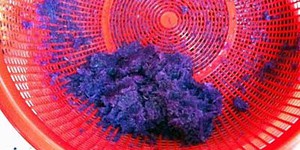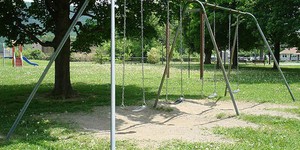First Grade Science Projects (137 results)
|
Select a resource
Coding Projects
Sort by
|
Making your own bubble solution is fun, but sometimes the bubbles don't seem to work as well as the solutions you buy in the store. In this experiment you can test if adding corn syrup or glycerin to your bubble solution will make it just as good as the stuff you can buy. This experiment will have you blowing bubbles!
Read more
Kites have been a source of entertainment for centuries for kids from cultures around the world. In this science project you will have a chance to build your very own kite, a simple sled kite. Then you will use it to investigate how kites fly. Will you find out the best way to fly your kite?
Read more
Do you like playing with play dough; or modeling clay? Wouldn't it be cool if you could add lights, sound, or even motion to your play dough creations? In this project, you will use play dough that conducts electricity, which will allow you to connect lights to your sculptures!
This project is the first in a three-part series on play dough circuits, which can all be done with the same materials. We recommend doing the projects in order.
Read more
A kaleidoscope is a fun toy that creates amazing images when you look into it. Wouldn't it be fun to create those images yourself? Check out this project to learn how to build your own kaleidoscope and to learn how the inside of a kaleidoscope works. Then you can create and adjust your own amazing, colorful images!
Read more
Have you ever ridden on a hovercraft? It is like gliding on a cushion of air! In this science project, you will make your own mini hovercraft using a CD or DVD and a balloon and investigate how the amount of air in the balloon affects how long the hovercraft hovers.
Read more
In the wild there are two types of animals: the hunters and the hunted. A good predator is always on the prowl for fresh prey. What can an animal do to stay off of the menu? Some animals have evolved to use a variety of camouflage tactics so they can fool their predators and increase their chances of survival. In this science project, you will be the hungry predator hunting for M&M® prey. But it may not be as easy as it sounds — some of your prey will be camouflaged. Will they be…
Read more
This experiment is for all the kids out there who love boiled cabbage! You say you do not like cabbage? Well maybe you will like this amazing color-changing liquid you can make with cabbage. Which solutions around your house can make the cabbage juice change color? Find out while you learn about acids and bases and how to test for them.
Read more
"Swing me higher, Mommy, higher!" Kids love to ride the swings at the playground. The back-and-forth motion of a swing demonstrates the physics of a pendulum. In this experiment, you will investigate the factors that affect the speed and duration of a pendulum's swing, also called an oscillating motion. You can even use your phone and a sensor app to record your pendulum's movement and determine its period of oscillation.
Read more
Have you ever heard someone say, "that plant is thirsty" or "give that plant a drink of water"? We know that plants, and even bouquets of cut flowers, need water to survive, but have you ever thought about how the water moves within the plant? In this science project, you will use colored water and carnations to figure out where the water goes.
Read more
Have you ever heard someone say that the moon is made of cheese? Even though the craters on the surface of the moon resemble holes in Swiss cheese, we know that this common myth is not true. Find out how craters are formed and why they are different sizes by doing this simple science project.
Read more
|















